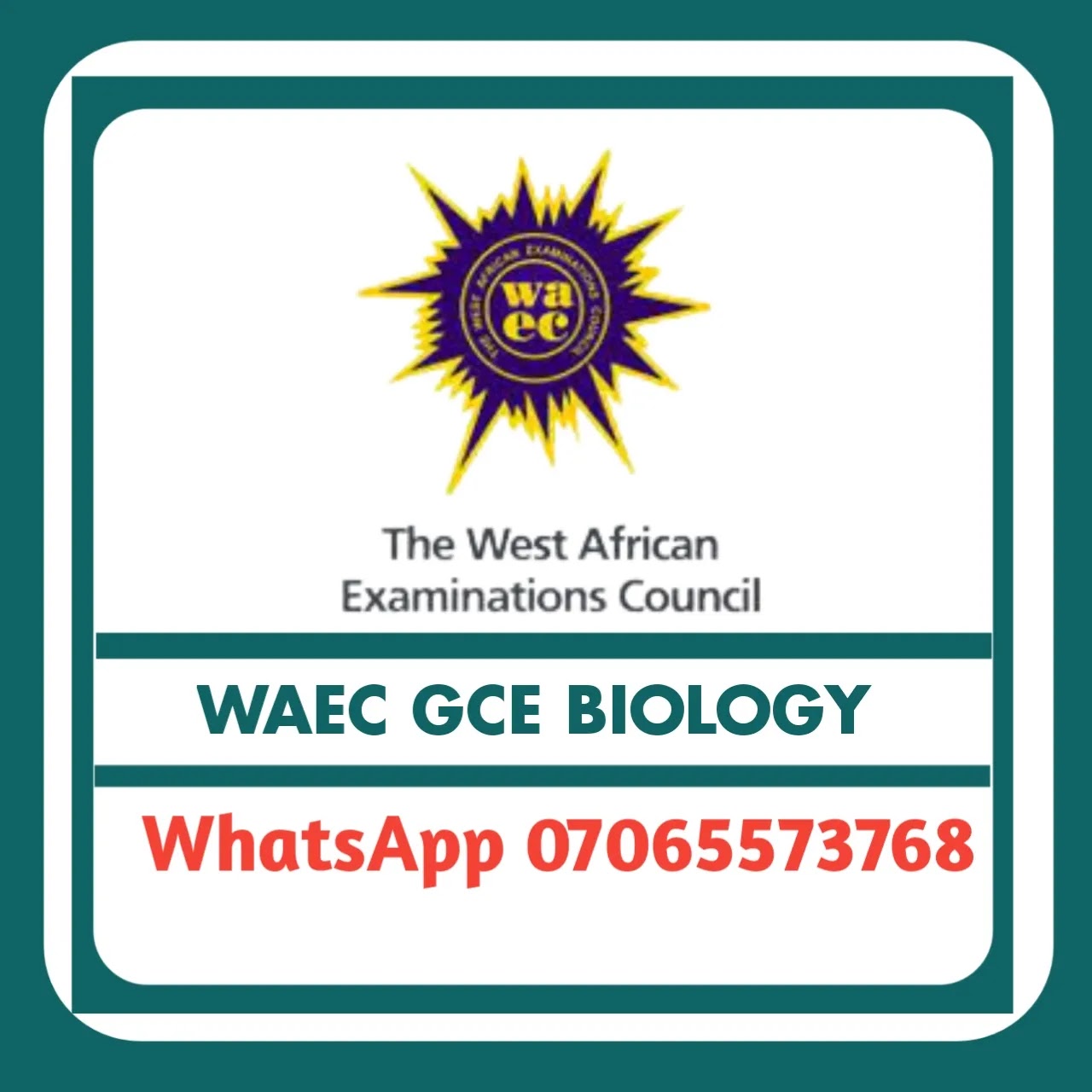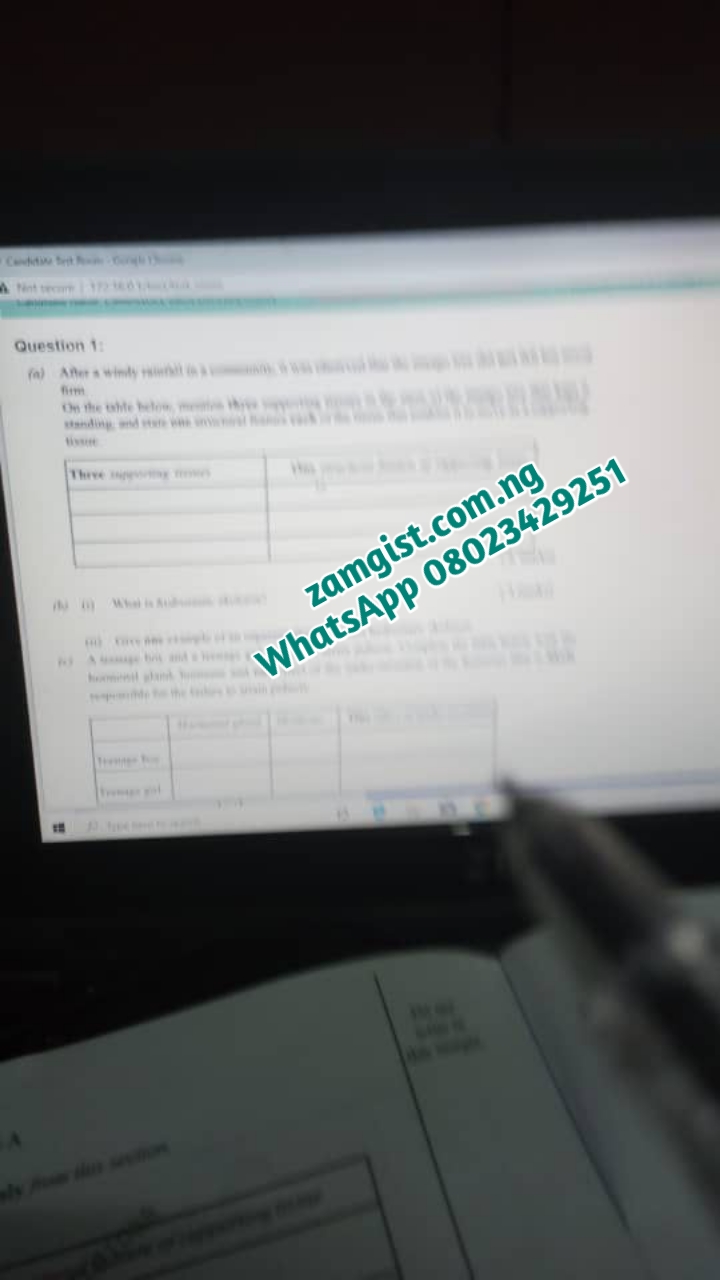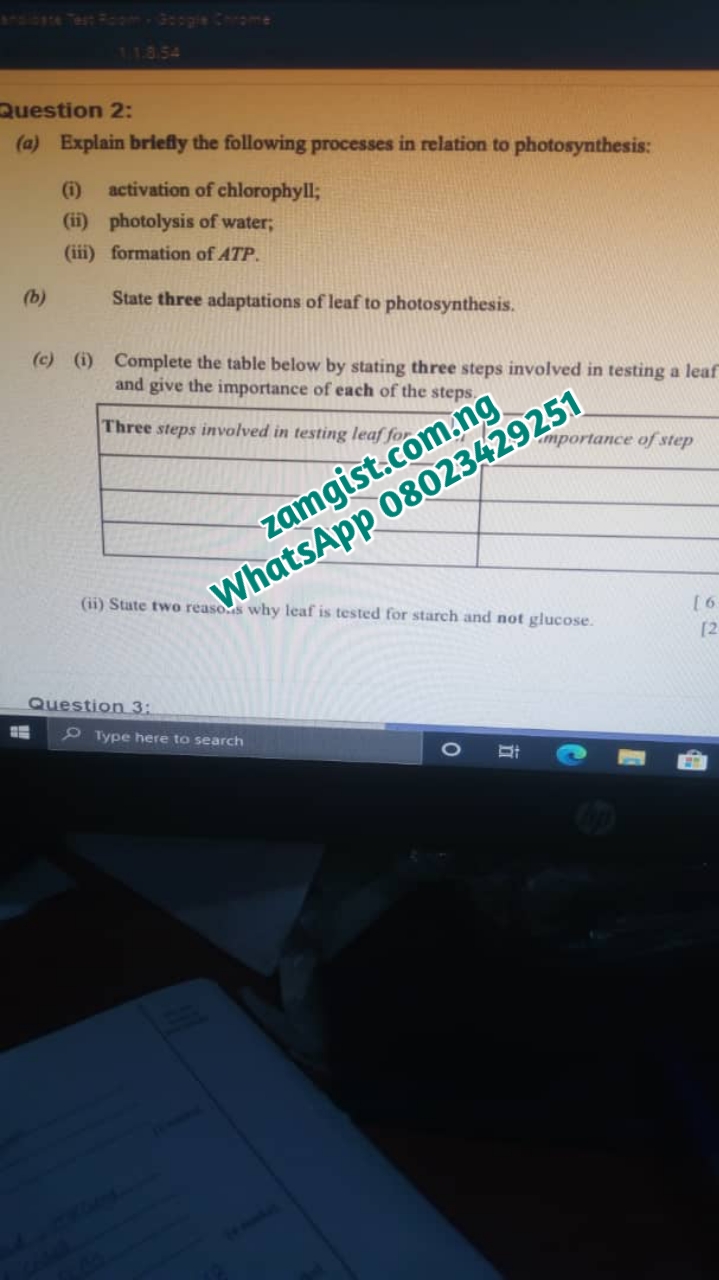2024 WAEC GCE Biology Question And Answer Expo
SUBSCRIPTION PRICE
== Direct SMS: #1500 MTN CARD
Direct SMS MEANS all answers (theory & obj) will come direct to your phone as SMS.
== WhatsApp:: #1000 MTN CARD
WhatsApp MEANS all answers (theory & obj) will be sent to you on whatsapp.
== Online PIN:: #1000 MTN CARD
Online PIN MEANS The Pin to access our answers online via our website will be sent to u at least 2hours before the exam to access our answers
CLICK HERE TO PAY AND GET YOUR PIN
Send The Following details:-
(i) MTN CARD Pin(s)
(ii) Your Name
(iii) Subject
(iv) Phone number
===> 07065573768 via sms
NOTE:- All SMS/ WhatsApp Messages Sent To The Above Number Are Attended To, Our Phone Number Might Be Diverted To Avoid Distraction. Always Send Us SMS/WhatsApp Message Of Your Complaint Even When Our Number Is Not Available, Your Message(s) Will Get To Us And We Will Reply You ASAP.
Also Read:
WAEC GCE Mathematics 2024 questions and answers
2024 WAEC GCE Igbo Question And Answer Expo
2024 WAEC GCE Biology Question And Answer Expo
WAEC GCE BIOLOGY QUESTIONS AND ANSWERS 2024
FAQ
What should I read in biology for Waec?
Below are the list of what you should
read in biology for Waec gce 2024:
- Concept of Living: This section covers the basic characteristics of
living things, such as the ability to grow, reproduce, and respond to stimuli.
- Classification: This section covers the different ways in which
living things can be classified, such as by kingdom, phylum, class, order, family, genus, and species.
- Living and non-living things: This section covers the differences between living
and non-living things.
- Classification of living things
into Kingdoms: This section covers the five kingdoms of living
things: Animalia, Plantae, Fungi, Protista, and Monera.
- Differences between plants and
animals: This section covers the key differences between
plants and animals, such as their cell structure, nutrition, and reproduction.
- Organization of life: This section covers the different levels of
organization of life, from cells to tissues to organs to organ systems to
organisms to populations to communities to ecosystems to biomes.
- Levels of organization: This section covers the different levels of
organization of life, from atoms to molecules to cells to tissues to organs
to organ systems to organisms to populations to communities to ecosystems
to biomes.
- Cell: This section covers the structure and function of
cells, including the different organelles and their roles.
- Cell structure and functions of
cell components: This section covers the structure and function of the
different parts of a cell, such as the nucleus, cell membrane, cytoplasm, and organelles.
- Similarities and differences
between plant and animal cells: This section covers the similarities and differences
between plant and animal cells, such as the presence of a cell wall in plant cells
and the absence of chloroplasts in animal cells.
- The Cell and its environment: This section covers the relationship between cells
and their environment, including the processes of diffusion, osmosis, and active transport.
- Physical and biophysical
processes diffusion osmosis active transport: This section covers the physical and biophysical
processes that cells use to move substances across the cell membrane, such as diffusion, osmosis, and active transport.
- Properties and functions of the
living cell: This section covers the properties and functions of
living cells, such as the ability to grow, reproduce, and respond to stimuli.
- Nutrition: This section covers the different ways in which
organisms obtain nutrients, such as photosynthesis and heterotrophy.
- Autotrophic (photosynthesis)
Heterotrophic (holozoic): This section covers the two main types of nutrition: autotrophic (photosynthesis)
and heterotrophic (holozoic).
- Cellular respiration: This section covers the process of cellular
respiration, which is how cells break down glucose to release
energy.
- Aerobic respiration anaerobic
respiration energy release: This section covers the two types of cellular
respiration: aerobic respiration and anaerobic respiration.
- Excretion: This section covers the process of excretion, which is how organisms remove
waste products from their bodies.
- Excretion in single-celled aquatic organisms.
Diffusion by body surface and by the contractile vacuole Waste products of
metabolism: This section covers how single-celled aquatic
organisms excrete waste products.
- Growth: This section covers the process of growth, which is how organisms
increase in size and complexity.
- Basis of growth: cell division (mitosis), enlargement,
and differentiation. Aspects of growth: increase in dry weight,
irreversible increase in size and length, and increase in the number of cells.: This section covers the basis of growth and the
different aspects of growth.
- Regions of the fastest growth
in plants Influence of growth hormones and auxins Growth curvatures
(Tropisms): This section covers the regions of fastest growth in
plants, the influence of growth hormones and auxins, and growth curvatures.
- Development: Enlargement and
differentiation: This section covers the processes of enlargement and
differentiation, which are two important aspects of development.
- Movement: This section covers the different ways in which
organisms can move.
- Organelles for movement: cilia
and flagella Cyclosis: This section covers the organelles that are used for
movement, such as cilia and flagella, and the process of cyclosis.
- Reproduction: This section covers the different ways in which
organisms can reproduce.
- Types of reproduction. Asexual: fission, budding and
vegetative propagation Sexual: Conjugation, formation of male and female
gametes (gametogenesis), fusion of gametes fertilization): This section covers the different types of
reproduction, including asexual reproduction and sexual
reproduction.
- Tissues and supporting systems: This section covers the different types of tissues
and supporting systems in plants and animals.
- Skeletons and supporting systems in animals: This section covers the different types of skeletons.
How many times is GCE written in a year?
WAEC GCE is written twice in a year, (January/February and November December
How to get waec gce biology expo 2024?
To get waec gce Biology expo 2024, kindly chat 07065573768 on WhatsApp to pay 1000 naira and to get it 4 hours before exam.








